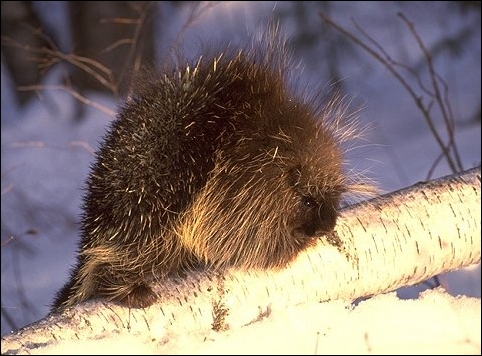

Someone once said, "The porcupine is a ubiquitous creature." Now "ubiquitous" means found everywhere, which isn't strictly true. It is, however, found in more places than most people realize. True, its stronghold is in forested regions, where it feeds on the bark of trees in winter. Nevertheless, it also occurs in desert scrub and other northern Chihuahuan Desert plant communities.
This large rodent sometimes is called a hedgehog. Like the porcupine, the strictly Old World hedgehogs are covered with quills, a feature that so impressed early European settlers that the name was transferred. Although both have quills that are stout, sharp modified hairs, only porcupine quills have small backward pointing barbs—the quills penetrate readily, but come out only with anguish. Embedded in flesh, they may in time work their way deeper if not removed, occasionally resulting in death of dogs or other inept predators.
The old tale of porcupines shooting their quills is false, but a slap
across the face by a quill-laden tail would seem to render the question moot to the
ill-fated victim.

Listen to the Audio (mp3 format) as recorded by KTEP, Public Radio for the Southwest.
Contributor: Arthur H. Harris, Laboratory for Environmental Biology, University of Texas at El Paso.
Desert Diary is a joint production of the Centennial Museum and KTEP National Public Radio at the University of Texas at El Paso.

Erethizon dorsatum, American Porcupine. Photographers: Gerald and Buff Corsi. Kalispell, MT. Copyright 1999 California Academy of Sciences.
Woods, C. A. 1999. North American Porcupine / Erethizon dorsatum. Pp. 671-673, in The Smithsonian Book of North American Mammals (D. E. Wilson and S. Ruff, eds.). Smithsonian Institution Press, Washington, D.C., 750 pp.